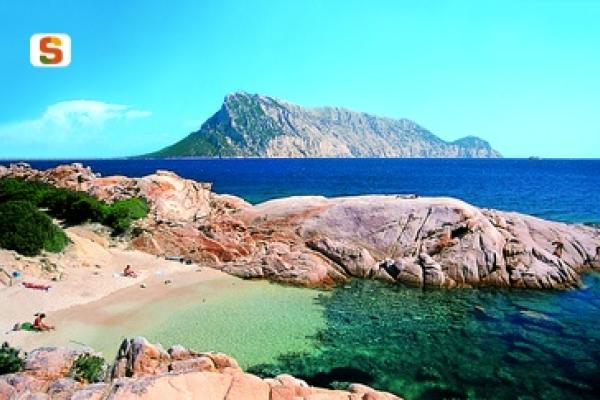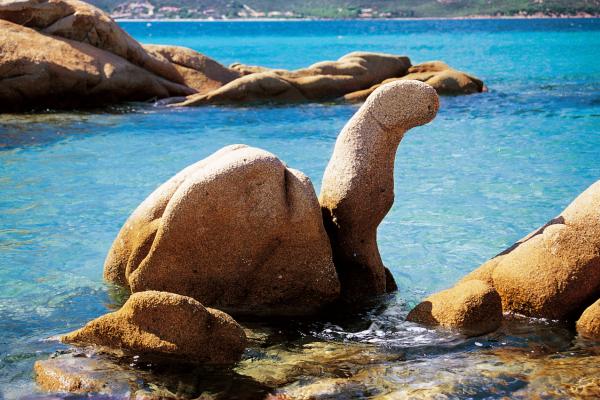Here and there, it still contains traces of ancient human presence, but today it is above all an uncontaminated haven made of granite and covered in Mediterranean greenery, immersed in the enchanting Gallura sea. Molara is one of the islands within the perimeter of the protected marine area of Tavolara – Capo Coda Cavallo, the second largest after Tavolara. It differs from its more famous ‘neighbour’ in its composition, as Tavolara is predominantly limestone, its shape and because it is uninhabited. Its name is of medieval origin and probably comes from its rounded and basically even appearance, like that of a millstone. The ruins on the island are surrounded by an aura of legend: the remains of a single-nave church may be traced back to a sanctuary dedicated to Saint Ponziano, who is said to have been exiled here by Maximinus Thrax. Around it, there are traces of a medieval settlement and a castle, while some sources testify to the presence of a convent during the 15th century.

Island
Along with its bigger ‘sister’ Tavolara and a group of islets, it is one of the pearls of a precious, delicate marine oasis waiting to be discovered, in the north-east of Sardinia
Along with its bigger ‘sister’ Tavolara and a group of islets, it is one of the pearls of a precious, delicate marine oasis waiting to be discovered, in the north-east of Sardinia
See this place because...
It is an ecosystem rich in historical, archaeological and natural treasures, with breathtaking views for swimming and diving, in a marine area with numerous points of interest
Ti piace questo luogo? Olbia e San Teodoro potrebbero essere la tua meta ideale.
You may also like
More attractions in the vicinity
Nearby hotels and accommodations

SAN TEODORO
3 km

SAN TEODORO
3 km

SAN TEODORO
3 km











